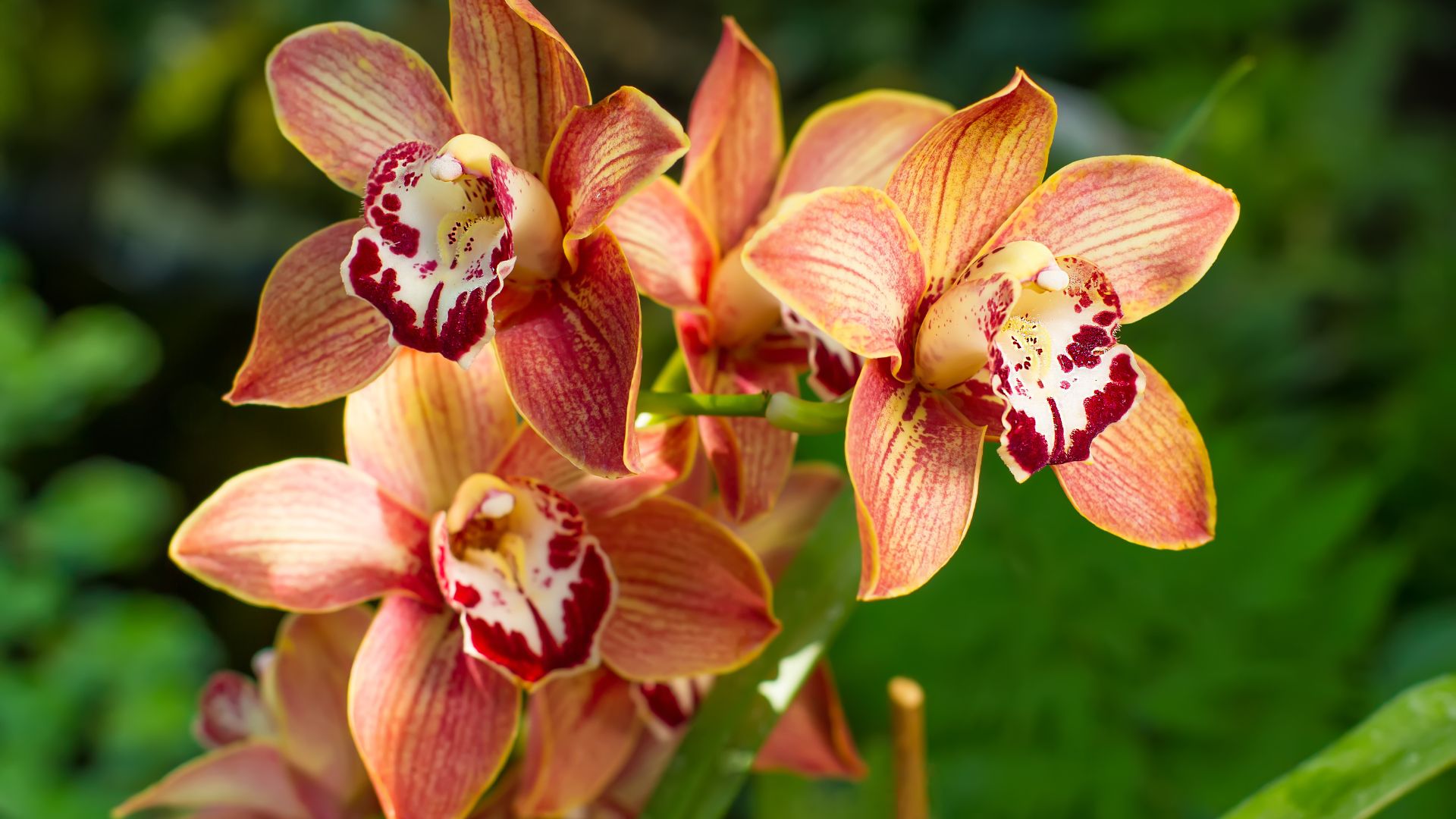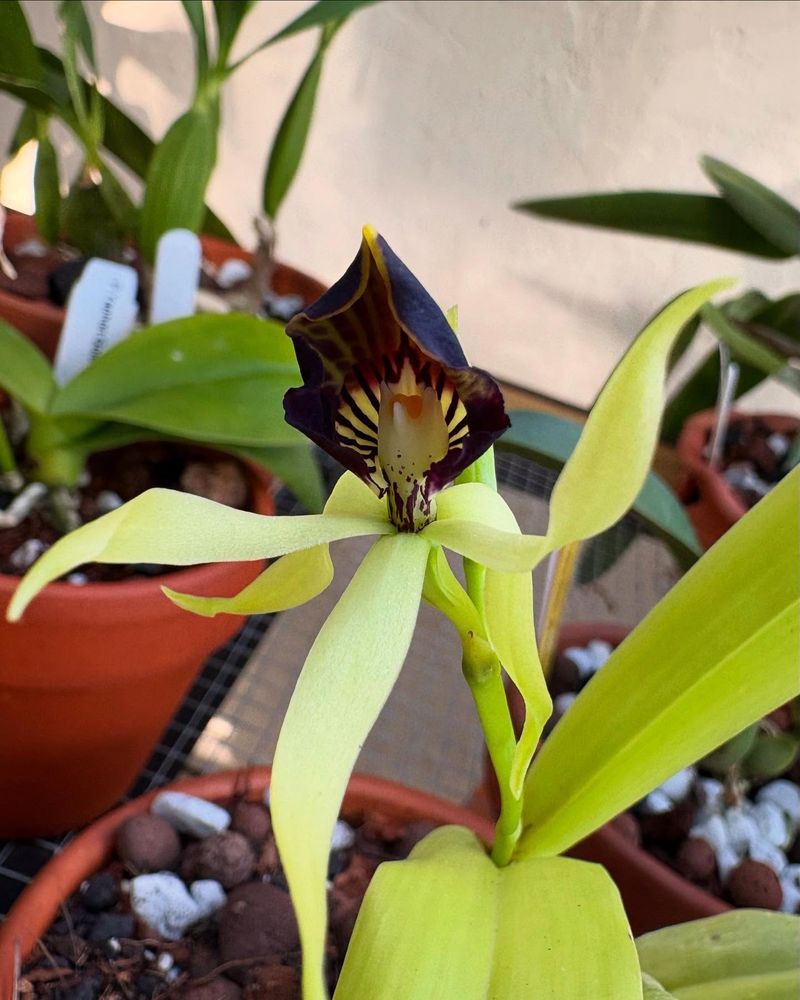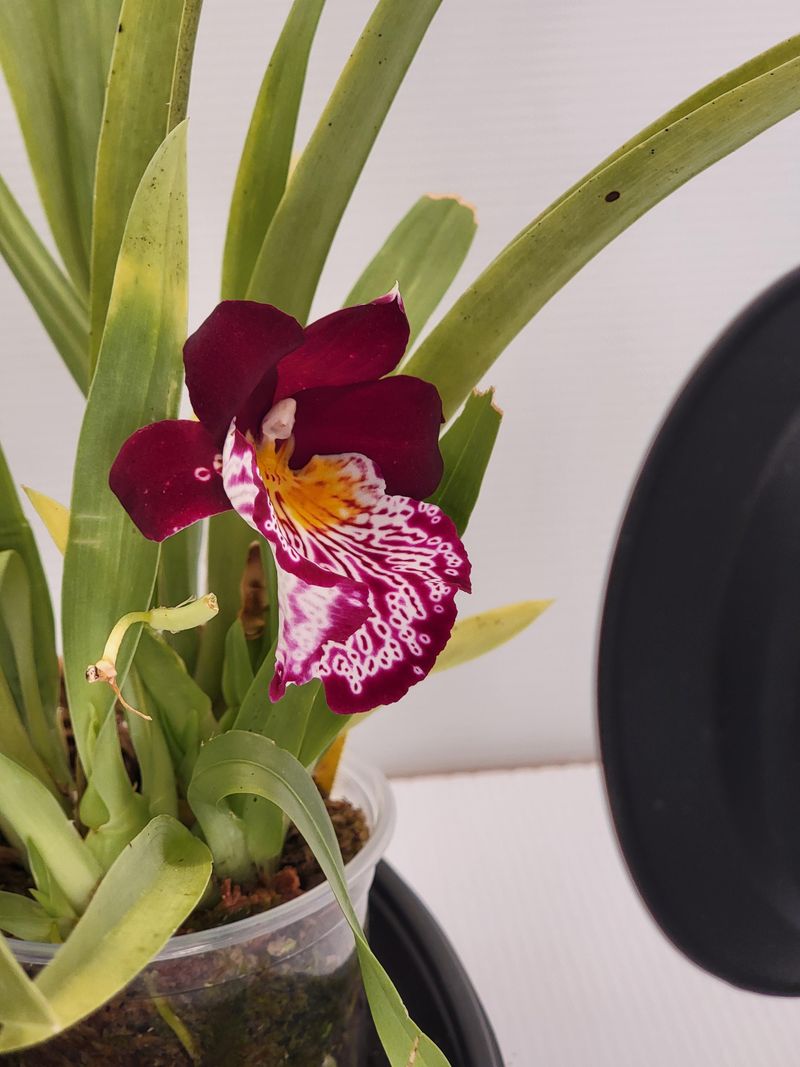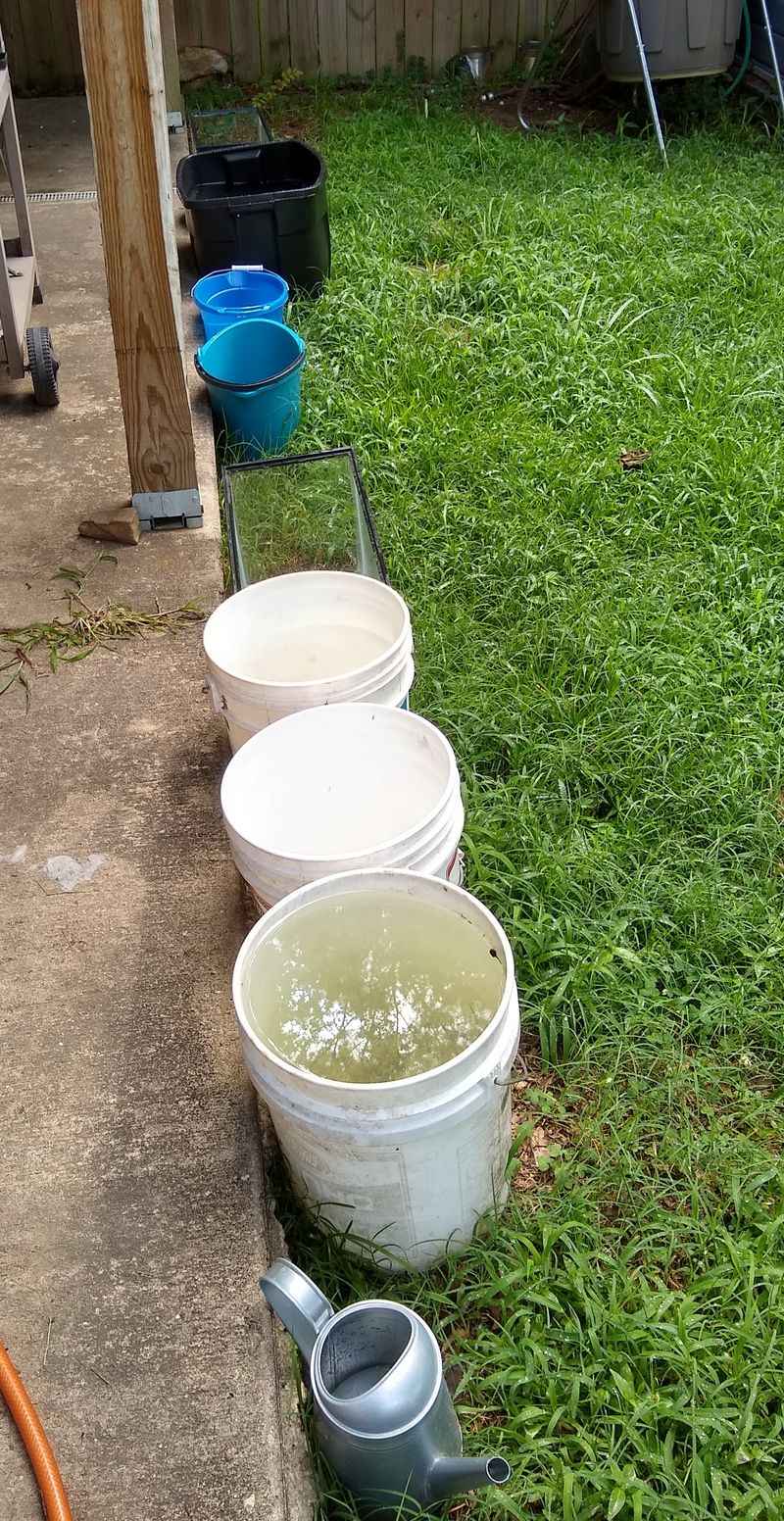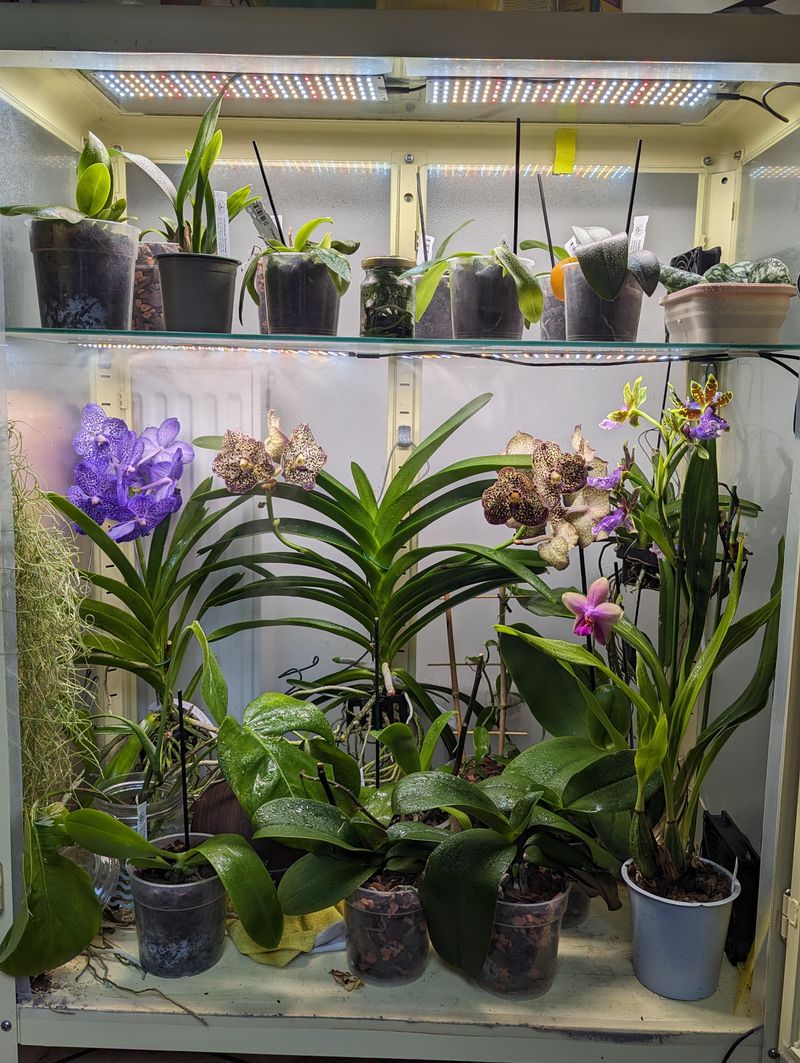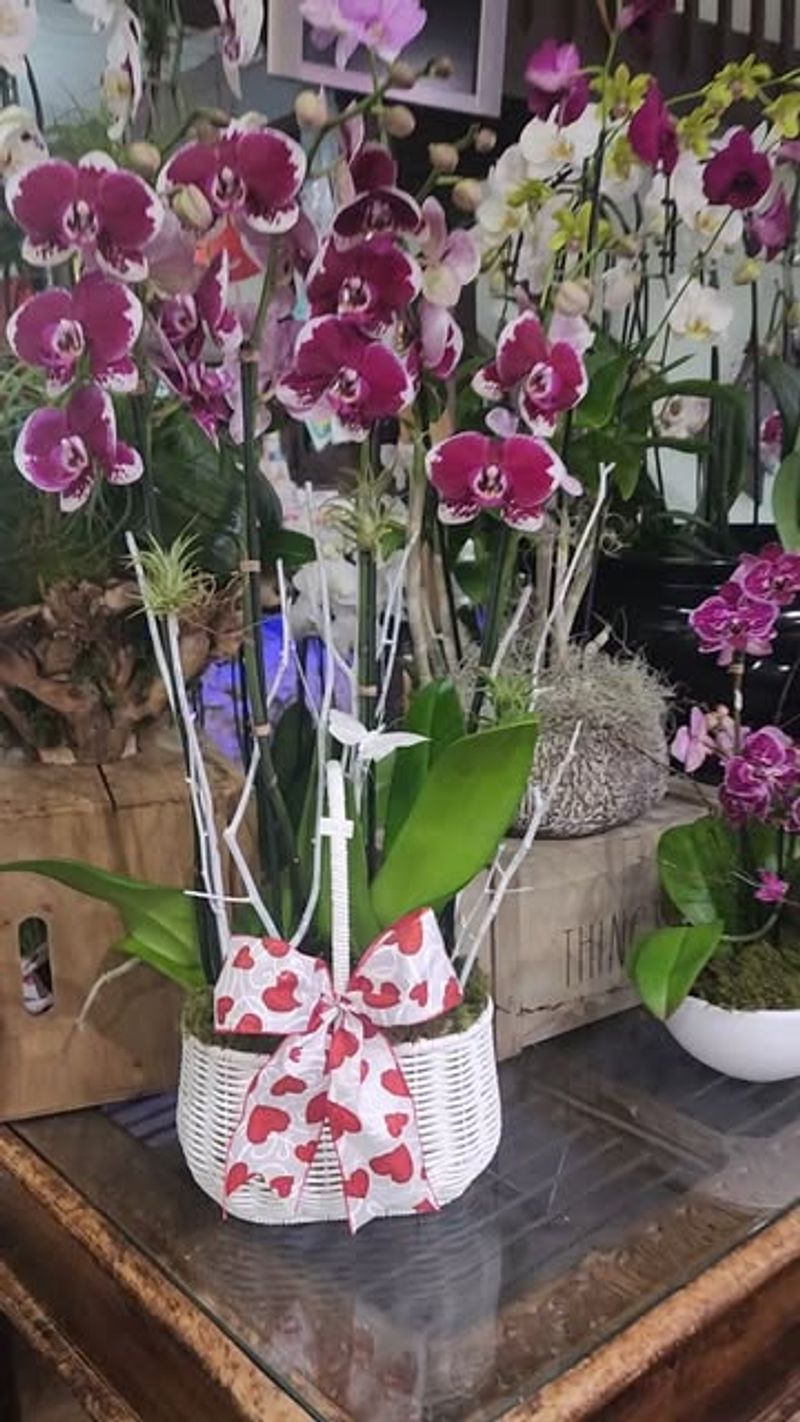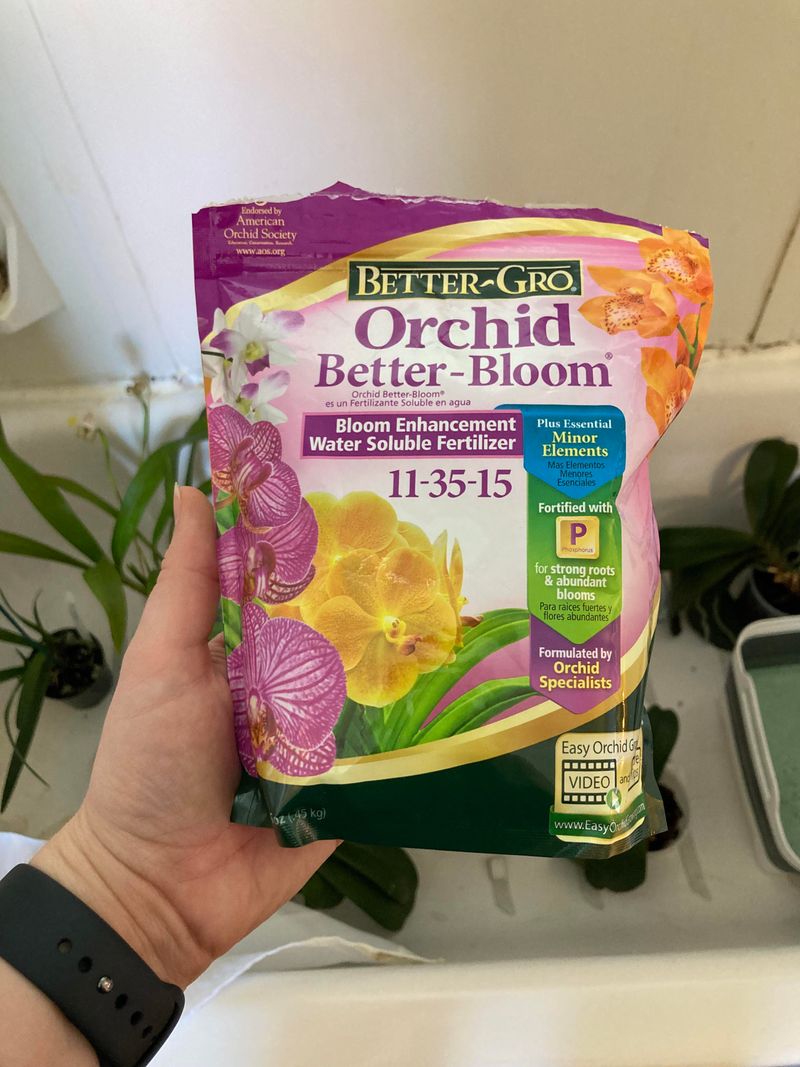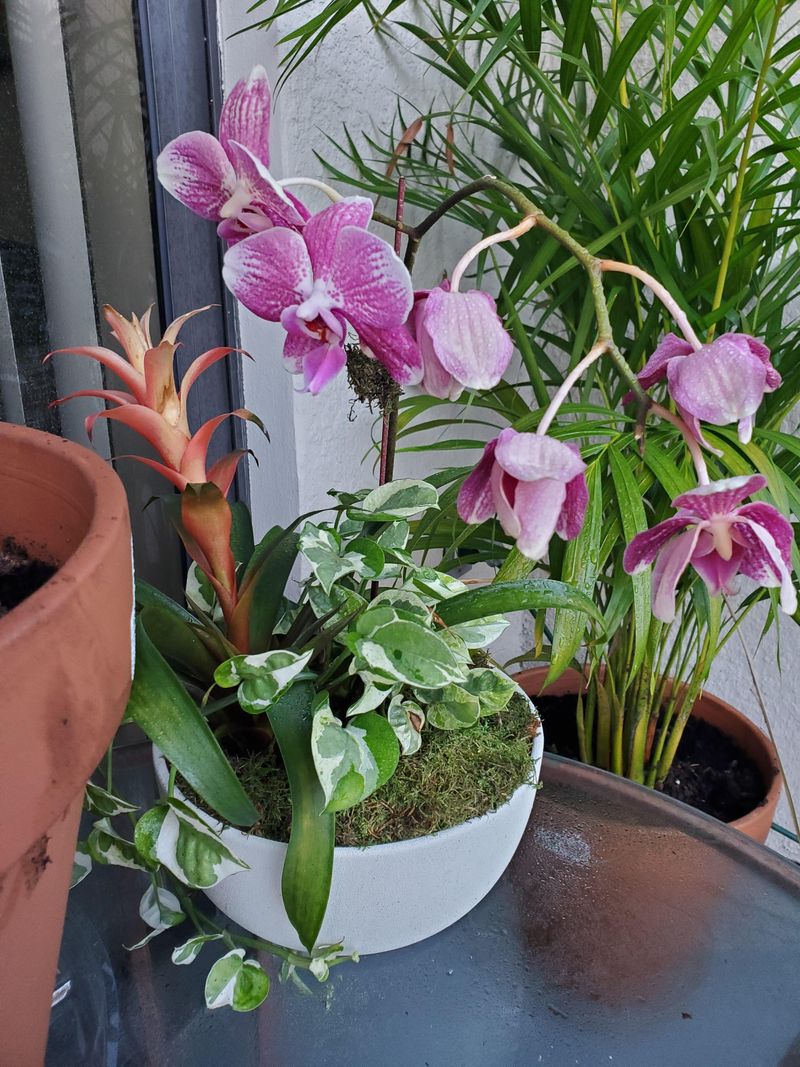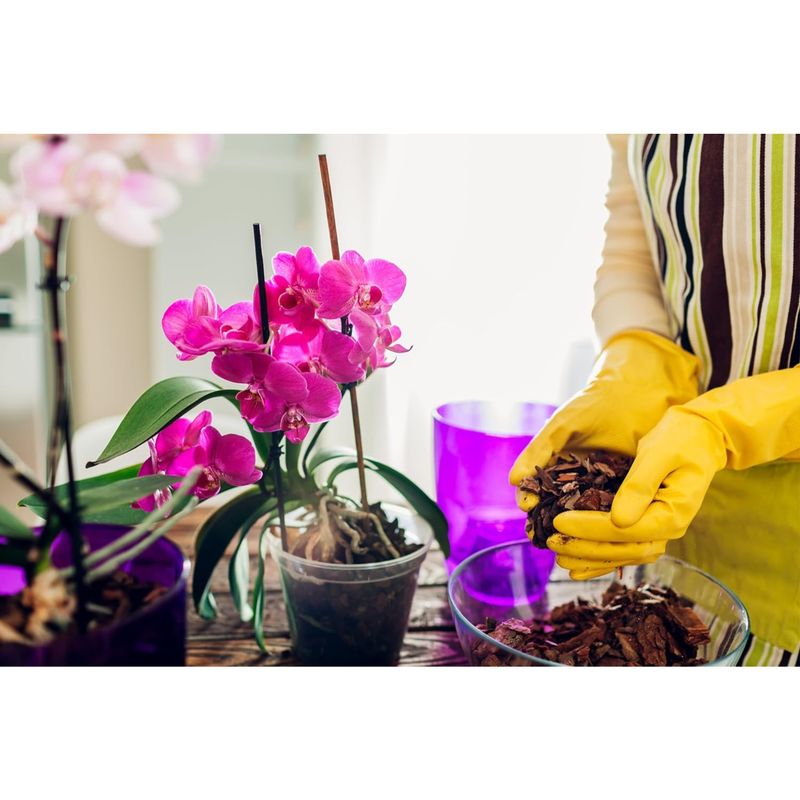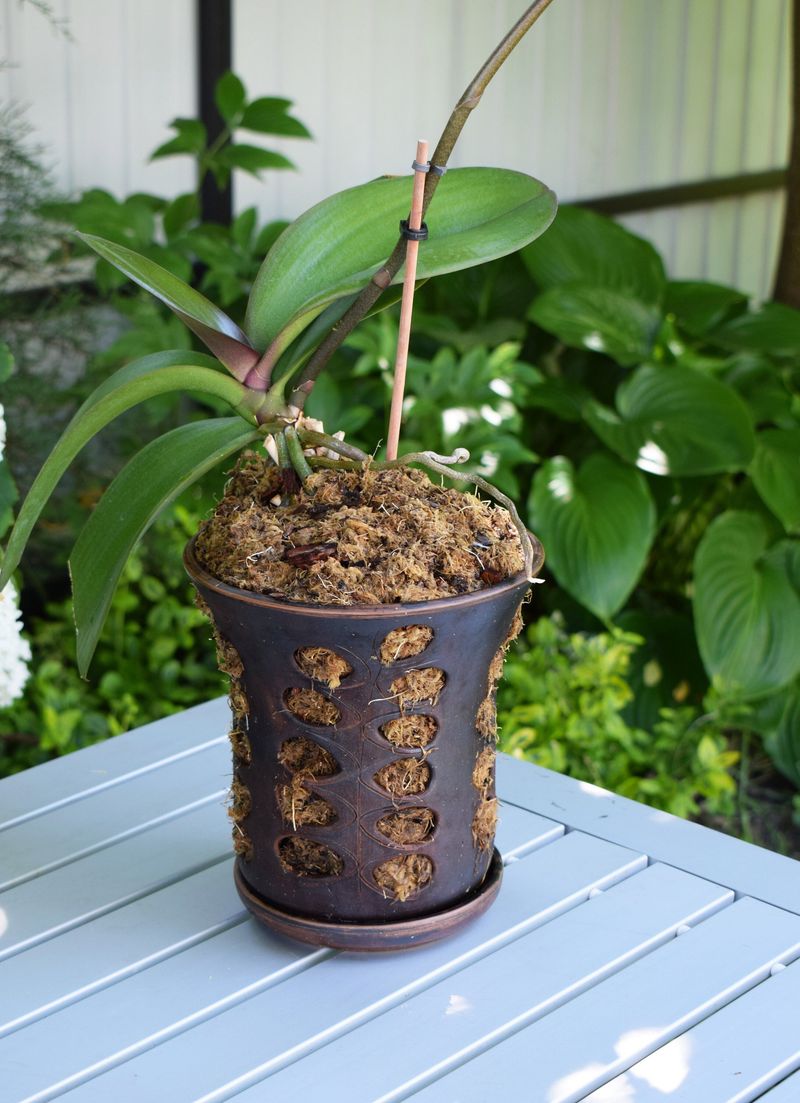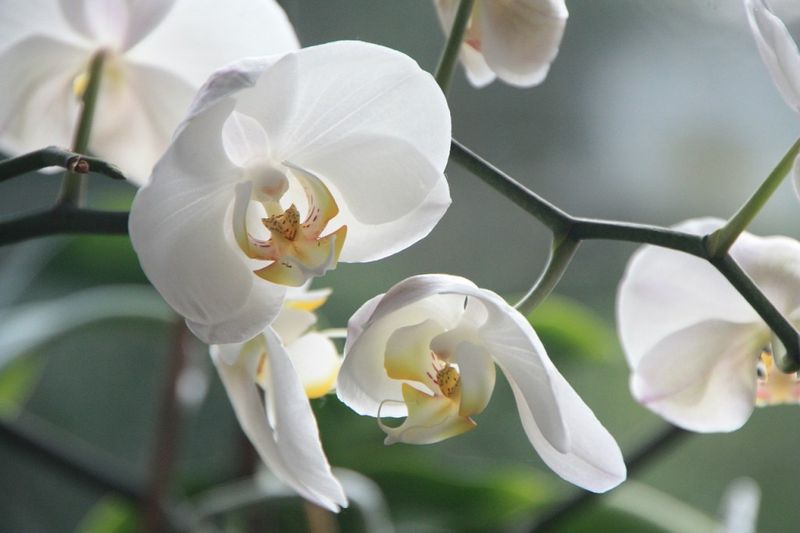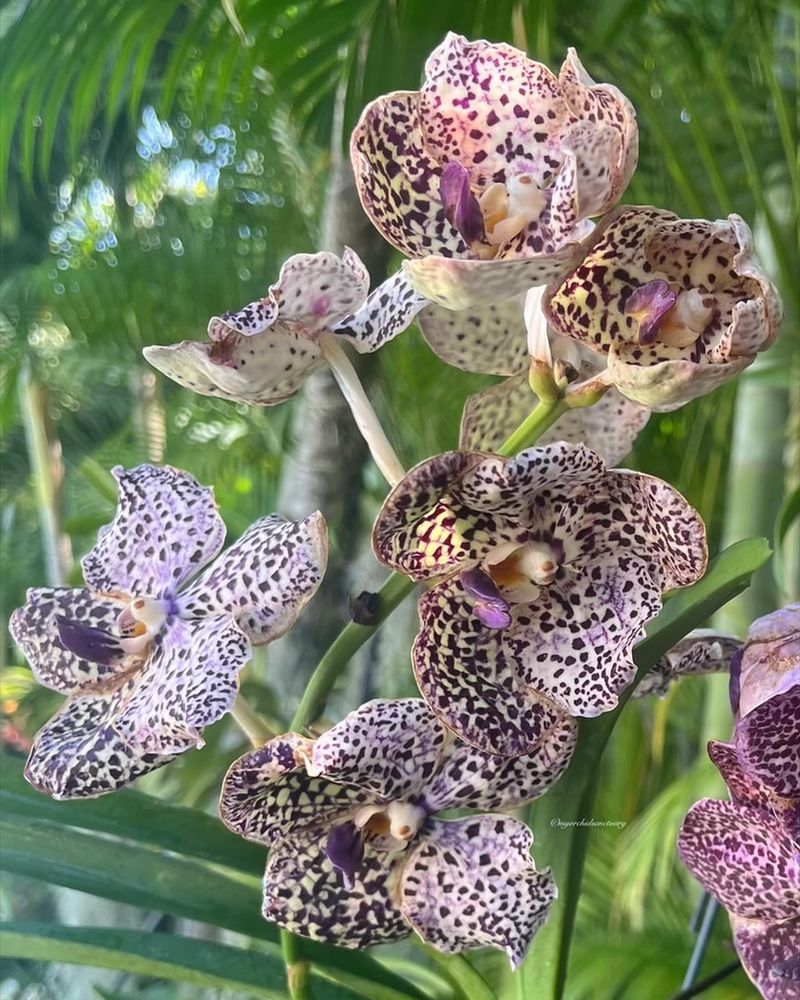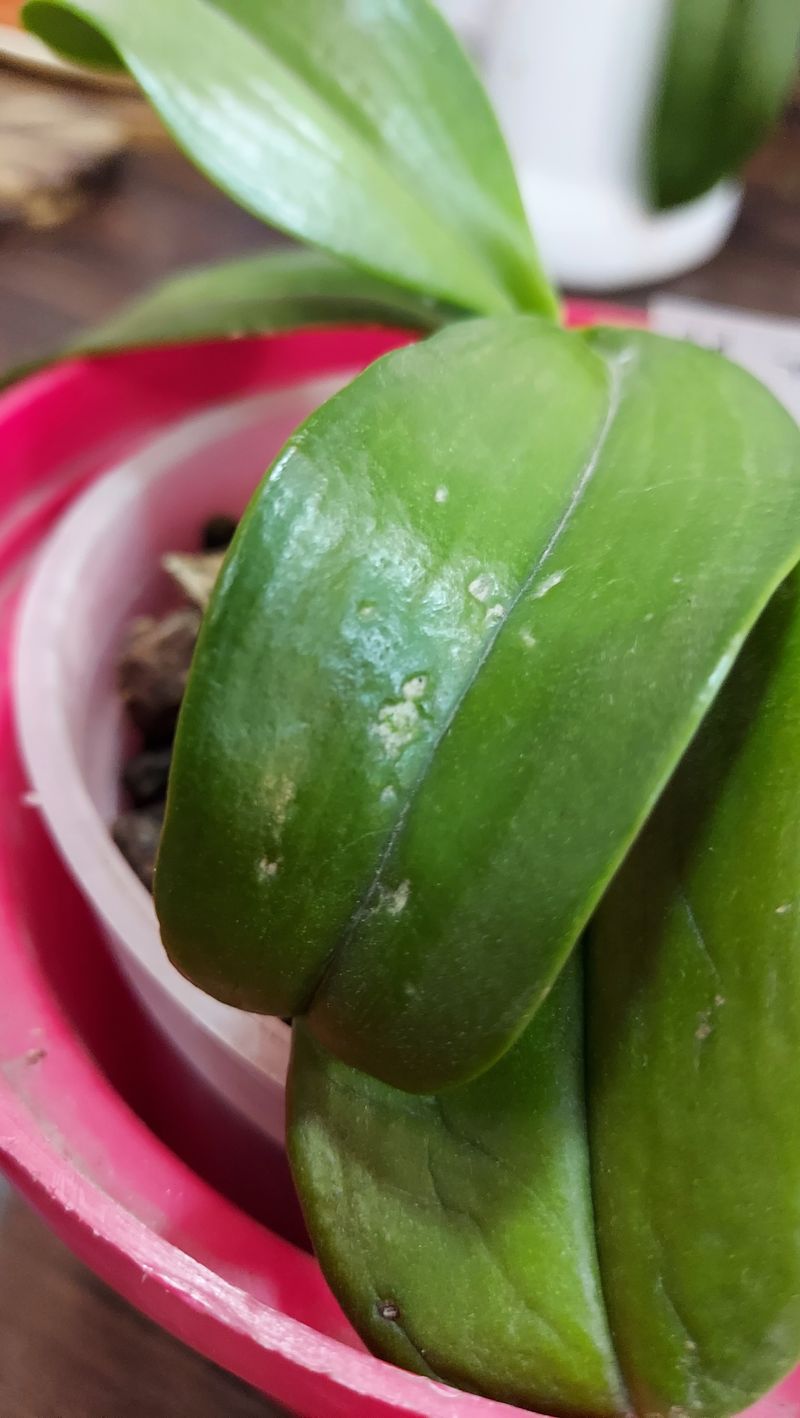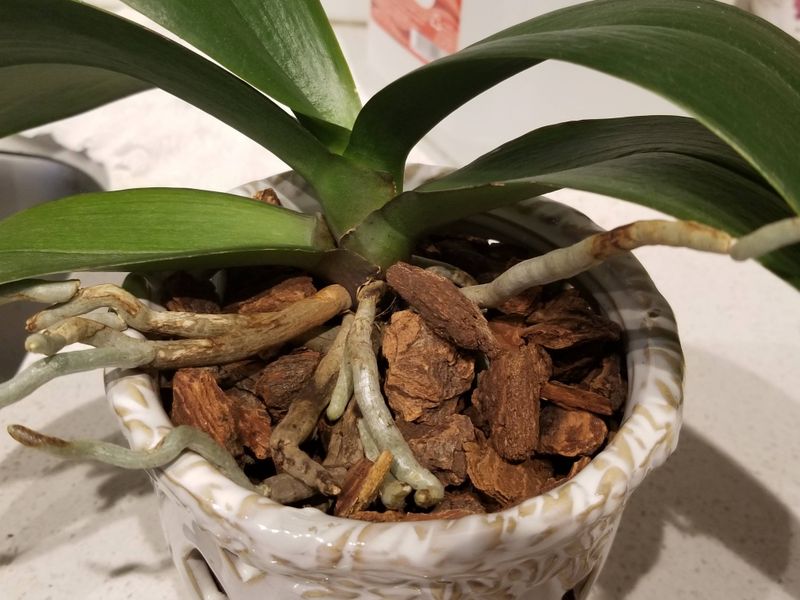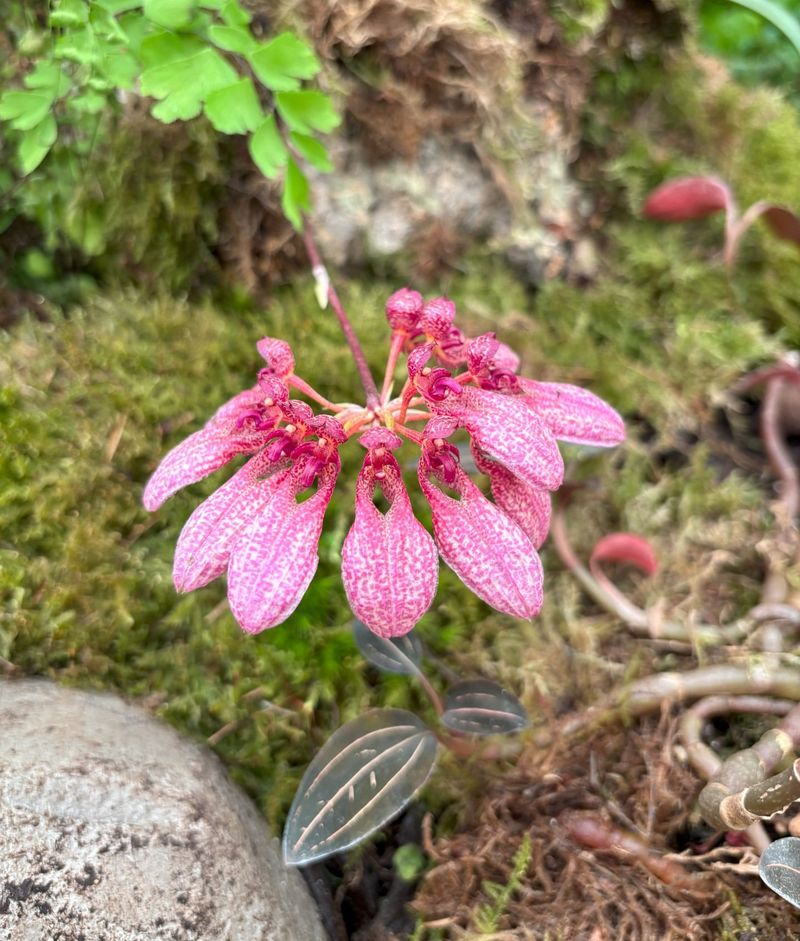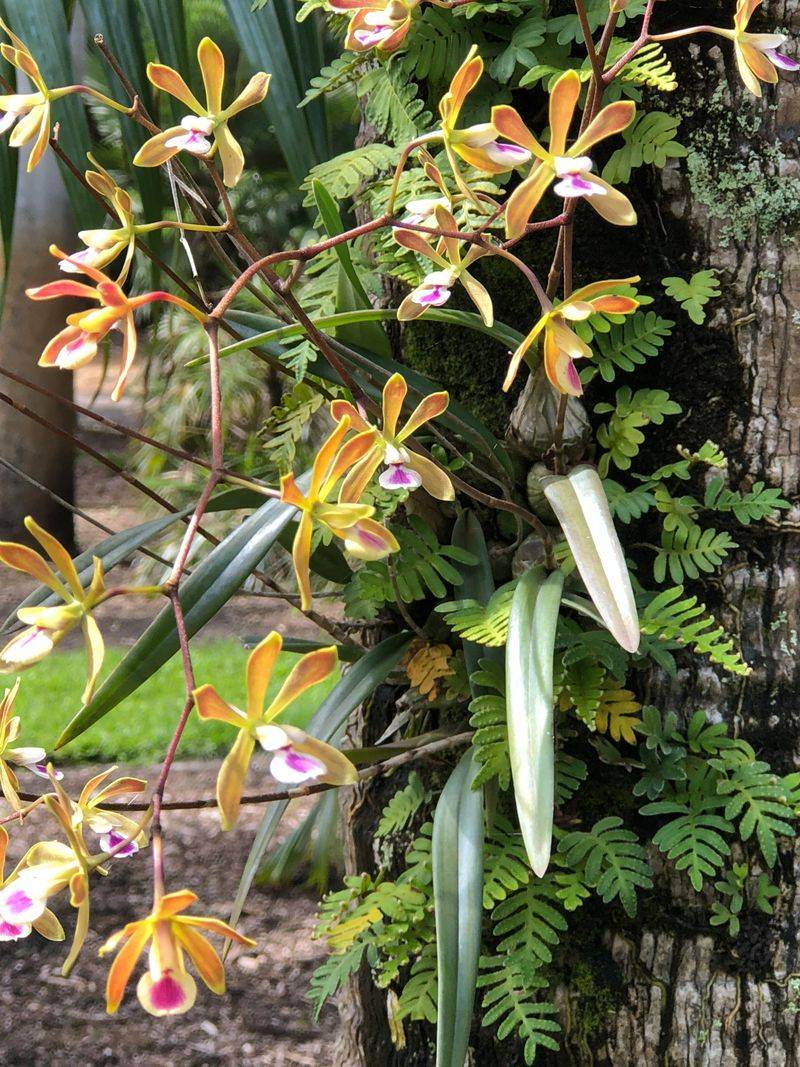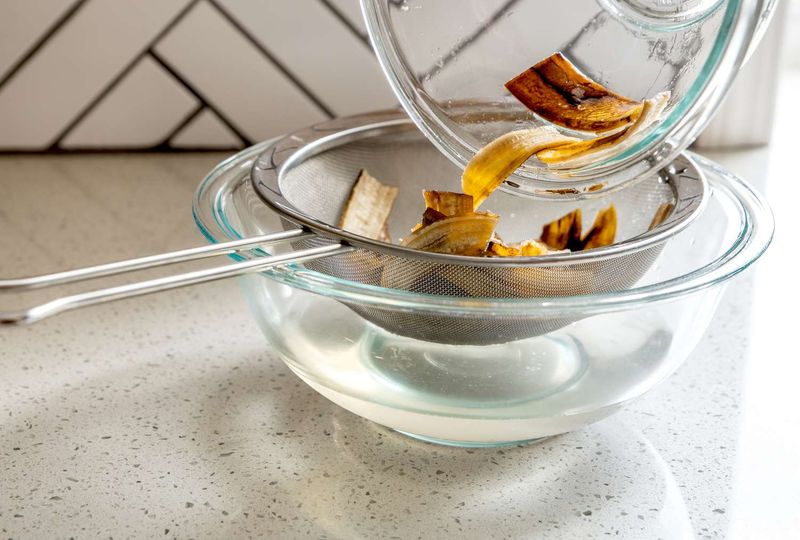Florida’s steamy August weather puts orchids to the test—relentless heat, muggy air, and sudden downpours can throw their rhythm off. But with 16 smart adjustments, I’ve seen even struggling plants perk up and bloom again. These tips make a real difference, especially in our unpredictable climate.
Many people give up too soon, not realizing orchids can bounce back with a few simple tweaks. I’ve learned the key is simulating natural conditions while shielding them from harsh extremes. The results have been worth it.
My neighbor nearly tossed her “hopeless” Phalaenopsis—until I shared a few late-summer strategies. Within weeks, fresh growth sprouted, and by fall, blooms were back. These techniques apply to a variety of orchids and offer hope for even the most stubborn non-bloomers.
1. Morning Watering Schedule
The scorching Florida August sun can quickly dehydrate orchids. Watering early, between 6-8 AM, allows roots to absorb moisture before temperatures climb.
Roots that are properly hydrated in the morning handle afternoon heat stress much better. I noticed my Dendrobiums putting out new growth within weeks of switching to this schedule.
Keep a simple calendar by your plants to track watering days – consistency matters more than quantity during August’s unpredictable weather patterns.
2. Humidity Trays That Work
Standard pebble trays often fail in Florida’s August heat. Try larger trays filled with lava rock instead of pebbles – they retain moisture longer while providing better air circulation.
Place these trays under hanging orchids or around potted specimens. The difference shows quickly in aerial root health, which turns from gray and shriveled to plump and green.
My collection thrived after switching from traditional setups to these modified humidity stations that better handle our intense summer conditions.
3. Rainwater Collection System
Florida’s August afternoon showers provide perfect orchid water. Set up a simple rain barrel with mesh covering to prevent mosquito breeding while capturing nature’s best orchid refreshment.
The natural acidity and lack of chemicals in rainwater makes a remarkable difference in bloom production. My Cattleyas responded with double the flower spikes after three weeks of rainwater-only irrigation.
Store collected water in clean containers out of direct sunlight to prevent algae growth.
4. Shade Cloth Positioning
August sun in Florida intensifies between 11 AM and 4 PM. Position 30-40% shade cloth specifically to block western exposure while allowing filtered morning light to reach your orchids.
The right shade positioning prevents sunburn while still providing enough light to trigger blooming. My lanai-grown Phalaenopsis developed flower spikes just two weeks after I adjusted the shade pattern.
Use adjustable clips rather than permanent attachments so you can modify coverage as seasonal light changes.
5. Fan Placement Strategy
Stagnant air breeds fungal problems in Florida’s humid August climate. Position small oscillating fans to create gentle, indirect airflow around orchids rather than blowing directly on them.
The key is consistent air movement that mimics natural breezes without drying out the plants. After setting up corner fans that circulate air upward first, my orchid collection showed remarkable improvement in leaf condition.
Run fans during the most humid parts of the day, typically from mid-morning through afternoon.
6. August-Specific Fertilizer Ratio
Florida’s August combination of heat and frequent rain leaches nutrients quickly. Switch to a higher-phosphorus fertilizer (like 10-30-20) at half-strength to encourage bloom development without burning roots.
Apply after morning watering when roots are already moist. The phosphorus boost signals to the plant that it’s time to produce flower spikes.
My Oncidiums responded dramatically to this August-only feeding change, developing multiple bloom spikes within three weeks.
7. Repotting Timing Trick
August evenings in Florida provide the perfect orchid repotting window. Work between 7-9 PM when temperatures drop but humidity remains high, reducing transplant shock dramatically.
Fresh medium during this season helps prevent root rot during frequent rain cycles. I’ve found evening-repotted orchids recover 40% faster than those replanted during daylight hours.
Keep plants in shade for 48 hours after repotting before returning them to their normal positions.
8. Bark Medium Modification
Standard orchid bark breaks down too quickly in Florida’s August heat and humidity. Mix in 20% horticultural charcoal and 10% perlite to improve drainage and prevent premature decomposition.
This modified mix maintains root health during our challenging late summer conditions. My collection showed visibly improved root systems within weeks of switching to this custom blend.
Pre-soak the medium for 24 hours before use to ensure proper hydration from the start.
9. Strategic Pot Selection
Plastic pots retain too much moisture during Florida’s rainy August season. Switch to clay pots or slotted orchid baskets that allow for better air circulation and faster drying between rainstorms.
The material and design of your containers directly affects blooming potential. My Vandas doubled their flowering after being moved to hanging cedar baskets with extra ventilation.
Choose pots no more than 1-inch larger than the root ball to prevent waterlogging.
10. Nighttime Temperature Management
Many orchids need temperature drops at night to trigger blooming. Create artificial temperature differentials by moving potted orchids outdoors between 8 PM and 7 AM during August.
Even Florida’s modest evening temperature drops of 8-10 degrees can signal blooming cycles to begin. My stubborn Dendrobium nobile finally produced buds after three weeks of this evening outdoor placement.
Use a simple rolling cart to make this daily movement easier.
11. Bloom Spike Protection
August storms can damage developing flower spikes. Create individual clear plastic shields using 2-liter bottles with the bottoms removed, placing them over emerging spikes during heavy rain forecasts.
These makeshift protectors have saved countless potential blooms in my collection. Remove shields promptly after storms pass to prevent humidity buildup.
Mark developing spikes with colored plant ties so you don’t overlook them when severe weather approaches.
12. Pest Prevention Protocol
August heat brings increased pest activity in Florida orchid collections. Create a weekly preventative spray using 1 tablespoon neem oil, 1 teaspoon mild dish soap, and 1 quart water.
Apply during evening hours to prevent leaf burn while deterring common pests. Regular prevention eliminates the need for harsher treatments later.
My collection remained pest-free throughout last August despite neighboring plants suffering significant infestations.
13. Root Exposure Technique
Florida’s August humidity provides perfect conditions for encouraging aerial root growth. Gently position some roots outside pot edges to increase their exposure to moisture-laden air.
These exposed roots dramatically increase the plant’s ability to absorb atmospheric nutrients. My Phalaenopsis collection developed significantly more robust root systems after implementing this simple adjustment.
Mist exposed roots lightly during extremely dry afternoons to supplement natural humidity.
14. Light Intensity Monitoring
August sunlight patterns shift quickly in Florida. Use a smartphone light meter app to check your orchids’ exposure weekly, aiming for 1500-3000 lux for Phalaenopsis and 3000-5000 for Cattleyas and Dendrobiums.
Adjusting positions based on actual measurements rather than guesswork makes a tremendous difference. My collection’s blooming improved by 30% after implementing this data-driven approach.
Take readings at 10 AM, noon, and 2 PM to capture the full exposure range.
15. Mounting Native Species
Florida’s native orchids thrive when mounted rather than potted during August’s growth season. Secure plants to cork bark or cypress slabs using fishing line or plant-safe wire, with a small moss cushion between plant and mount.
The natural setup mimics their growth habits in Florida’s swamps and hammocks. My native Encyclia tampensis produced three bloom spikes after being mounted this way.
Mist mounted orchids daily during August’s heat.
16. Bloom-Boosting Banana Peel Tea
August is perfect for applying natural bloom boosters in Florida’s growth-friendly climate. Soak three banana peels in a gallon of water for 48 hours, then use this potassium-rich tea to water orchids once weekly.
The natural potassium encourages flower spike development without harsh chemicals. My oldest orchids responded with unprecedented flowering after just three applications.
Store unused tea in the refrigerator for up to two weeks to prevent fermentation.

